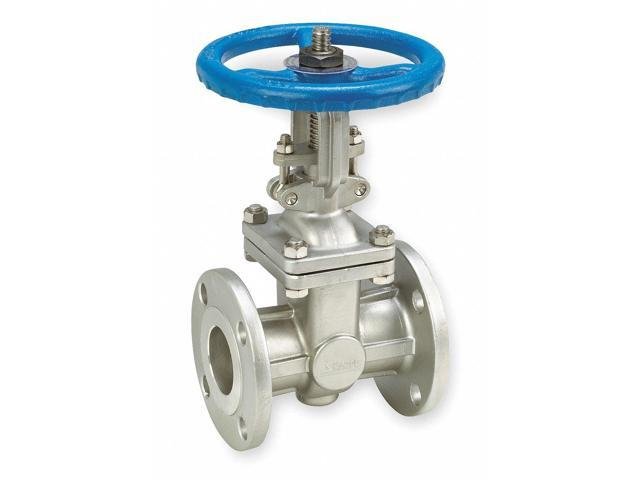Operational Comparison
Butterfly valves stand out in many applications for their quick operation. Its simple 90-degree rotating mechanism allows for on/off operation that usually takes only a few seconds, and even motorized butterfly valves can be fully operated in 10-30 seconds.
In contrast, gate valves take significantly longer to operate. Due to their multi-turn threaded drive mechanism and the long stroke of the gate, gate valves typically take several minutes to go from fully open to fully closed, and large diameter gate valves may even take 10-15 minutes.
However, operating time is not the only criterion for valve selection. In applications where frequent operation is not required or speed of operation is not critical, the long operating time of a gate valve may not be a problem.
Installation Space
Compared to gate valves, butterfly valves require less vertical installation height, less operating space, and more flexibility in piping layout. Gate valves, on the other hand, require a larger vertical space and operating area due to their structural characteristics, especially for large-diameter gate valves.
Cost Comparison
Typically, butterfly valves have the advantage of lower initial and maintenance costs due to their simple construction, low material usage and simple processing. In contrast, gate valves have higher initial and installation costs, but their long-term reliability and durability may provide better overall economic benefits in high-pressure, high-temperature, or applications requiring tight shutoff.
In most routine applications, butterfly valves are more cost-effective; however, in some demanding environments or critical applications, the high reliability and long life of gate valves may be more advantageous. Therefore, the final choice should be based on a combination of specific application scenarios, system requirements and long-term operating costs.
Safeguard
Maintenance of gate valves is usually more complex and time-consuming. Several components, such as the gate, stem and sealing surfaces, require maintenance, which often involves disassembling the entire valve, cleaning and replacing the sealing surfaces, and adjusting the position of the gate. Longer downtime may also require professional maintenance personnel to operate.
In contrast, butterfly valve maintenance is simpler and faster. Its main maintenance points are concentrated in the butterfly plate and sealing ring, most of the cases do not need to completely dismantle the valve. Butterfly valve seal replacement is also more convenient and usually can be completed in a relatively short period.
However, from another point of view, the sealing ring of the butterfly valve may need to be replaced frequently, especially in frequent operation or handling of abrasive media. It will also increase the maintenance cost
Overall, butterfly valves are easier to maintain daily, but gate valves may be more durable in the long term, it is still necessary to consider it comprehensively, Bafaw has many years of operating experience and real product usage data, if you can't decide, we can give you clear advice!
Application Scenario
Gate valves are particularly well suited for applications that require complete shutoff of fluids, commonly found in the petroleum, chemical, and power industries.
Butterfly valves excel in flow regulation and occasions where frequent switching is required. Commonly used in water treatment, HVAC, food processing and other industries.
To sum up is for the need to strictly cut off and infrequent operation of high-pressure systems, the priority choice of gate valve;
For low-pressure systems that require frequent flow regulation and fast switching, butterfly valves may be a better choice.














































